This essay was originally published in The Public Domain Review under a Creative Commons License. Please see their rules for reuse.
Deadly fogs, moralistic diatribes, debunked medical theory — Brett Beasley explores a piece of Victorian science fiction considered to be the first modern tale of urban apocalypse.

Scarcely can I portray in words the dire and dismal scenes that met my vision here. … For here, where on the previous night had throbbed hot and high the flood-tide of London’s evening gaiety, was now presented to my poor fevered sight, the worst, the most awful features of the whole terrific calamity. I had entered into the very heart and home of horror itself.
This is the way the world ends: not with a bang but a bronchial spasm. That is, at least, according to William Delisle Hay’s 1880 novella, The Doom of the Great City. It imagines the entire population of London choked to death under a soot-filled fog. The story is told by the event’s lone survivor sixty years later as he recalls “the greatest calamity that perhaps this earth has ever witnessed” at what was, for Hay’s first readers, the distant future date of 1942.
The novella received only mild acclaim among its late Victorian readers, and today it is almost forgotten. But, surprisingly enough, it has become possible to read our social and environmental problems foretold in Hay’s strange little story. In our age of global warming, acid rain, and atmospheric pollution, we may become the first readers to take Hay seriously. When Hay imagines a city whose wealth and “false social system” lulls it into complacency, we can recognize ourselves in his words. And as for those air problems that loomed dangerously around them, Londoners “looked upon them in the light of a regular institution, not caring to investigate their cause with a view to some means of mitigating them”. At moments like these, we get the feeling that Hay’s obscure 135-year-old story is eerily prophetic.
But before we canonize Hay as an environmentalist and his story as An Inconvenient Truth in Victorian garb, we have to look at the story’s other features. Readers of The Doom of the Great City unfailingly notice that the story does not fit easily with other science fiction narratives, but seems to belong also to another class of tales, which Brian Stableford has called “ringing accounts of richly deserved punishment”. This is because Hay’s narrator seems to slide back and forth between material and moral explanations for pollution. While he talks of how “In those latter days there had been past years of terribly bad weather, destroying harvests”, he adds in the same paragraph, “prostitution flourished rampantly, while Chastity laid down her head and died! Evil! — one seemed to see it everywhere!”
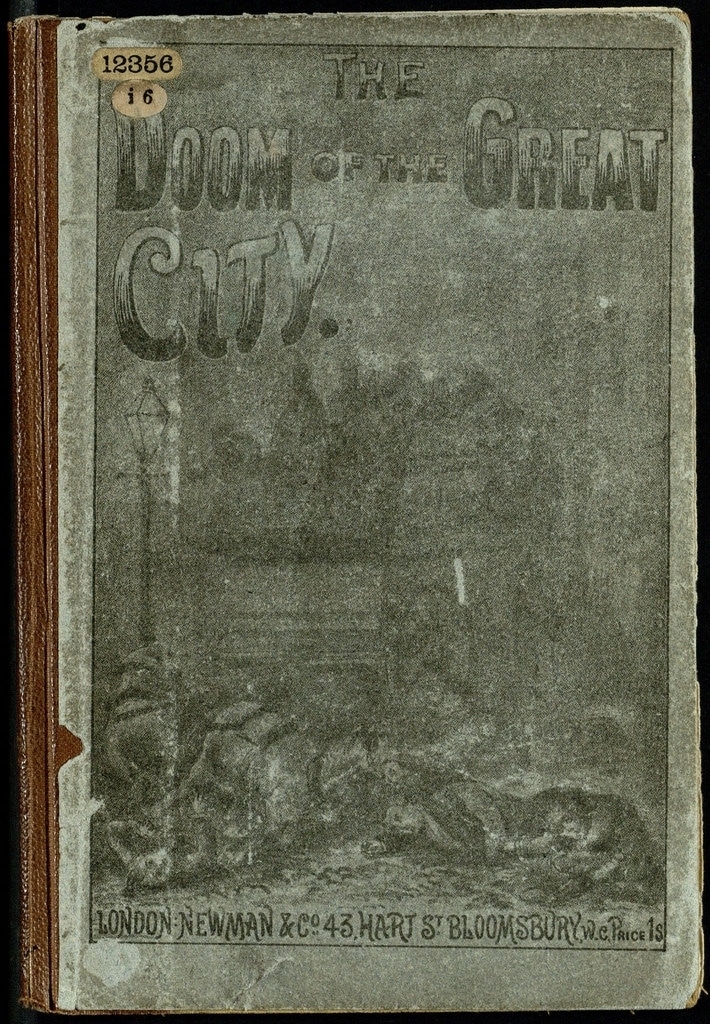
In fact, the narrator goes so far as to cast himself as a prophet. Like a latterday Jeremiah he reviles London as “foul and rotten to the very core, and steeped in sin of every imaginable variety”. In a twenty-page diatribe he catalogues vices such as prodigality, corruption, avarice, and aestheticism — not to mention feminine vanity, for which he reserves special scorn. He denounces tradesmen, aristocrats, theater-goers, and the young as well as the old. For him, London is like Atlantis or Babylon standing blithely unaware of the divine wrath about to strike it.
All of this raises an important question: can pollution be material (i.e. made of soot, ashes, smoke, chemicals, etc.) and moral as well? The same question could also be stated as a problem of genre. What exactly are we reading when we read The Doom of the Great City? Is it a forward-looking sci-fi tale about a dystopian future that may yet arrive? Or is it a fantasy of divine retribution that belongs with the ancient past?
In order to answer that question, we need a working definition of science fiction. For that definition we could look to Rod Serling’s statement that science fiction is “the improbable made possible”. Hay certainly draws from available scientific ideas to make his improbable story into a reasonable possibility. Hay’s contemporary F. A. R. Russell consistently noted higher instances of death from asthma and respiratory complaints during intense fogs, and he published widely in an effort to raise public concern about them. But Hay’s literary precursors (like the public in general) tended to see the fog as a mere nuisance. They could even at times show some fanciful tenderness toward it as toward an ugly pet that won’t go away. For example, William Guppy in Dickens’ 1853 novel Bleak House describes the fog in familiar terms as “The London Particular”. But Hay makes that seemingly friendly pet bite — and, increasingly, the data was on his side.
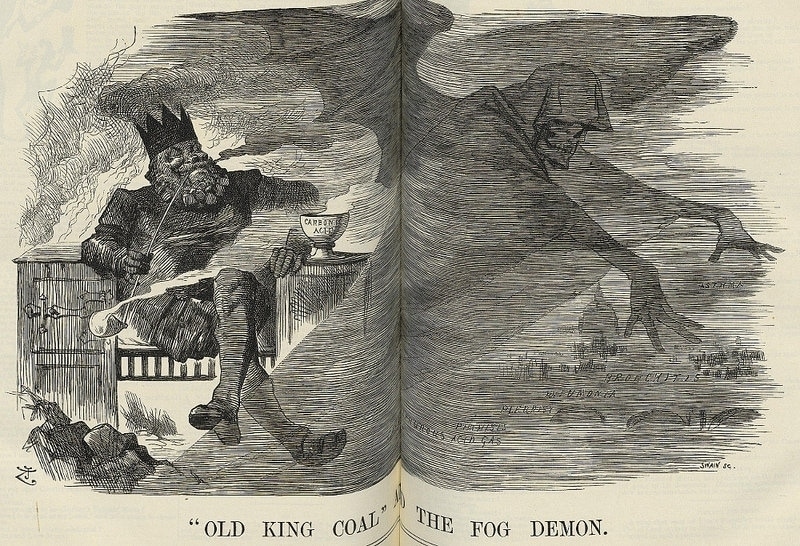
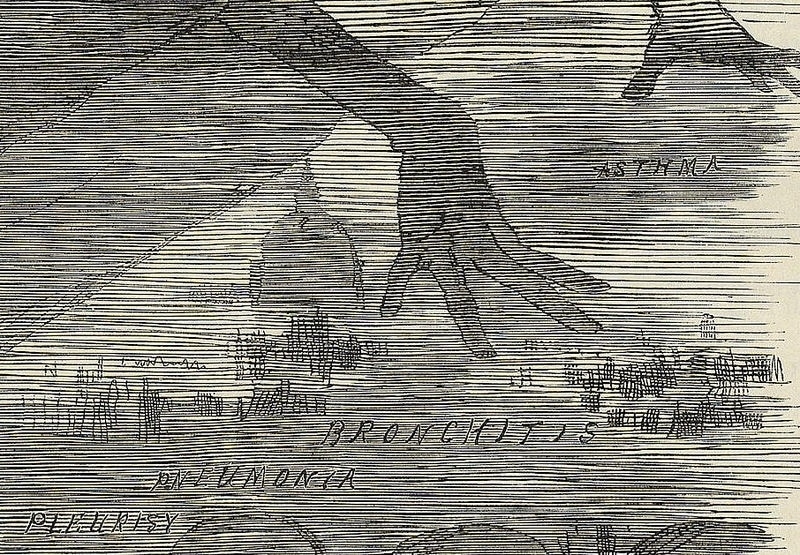
In addition to the evidence of news and anecdotes, Hay needed a plausible cause of death, not just for the infirm, but for an entire metropolitan population. That is where the “bronchial spasm” comes in. Hay, a published scientist (specifically a mycologist) is scrupulous on this point. On the chance journey into the country that saves his life, Hay’s protagonist discusses the fog with a friend who also happens to be a leading medical authority, one Wilton Forrester. Forrester gives “the benefit of his scientific acquirements,” (emphasis mine) by laying out what he considers to be the only possible scenario in which a fog can prove fatal. He explains that in a case he previously observed that
the bronchi and tubes ramifying from them were clogged with black, grimy mucus, and death had evidently resulted from a sudden spasm, which would produce suffocation, as the lungs would not have the power in their clogged condition of making a sufficiently forcible expiatory effort to get rid of the accumulated filth that was the instrument of death.
Hay goes so far as to include footnotes referencing actual medical authorities on this point. Rather than seeming far-fetched, Hay’s first readers could hardly have doubted that, past a certain threshold of pollution, a fog would certainly prove fatal to those who inhaled it.
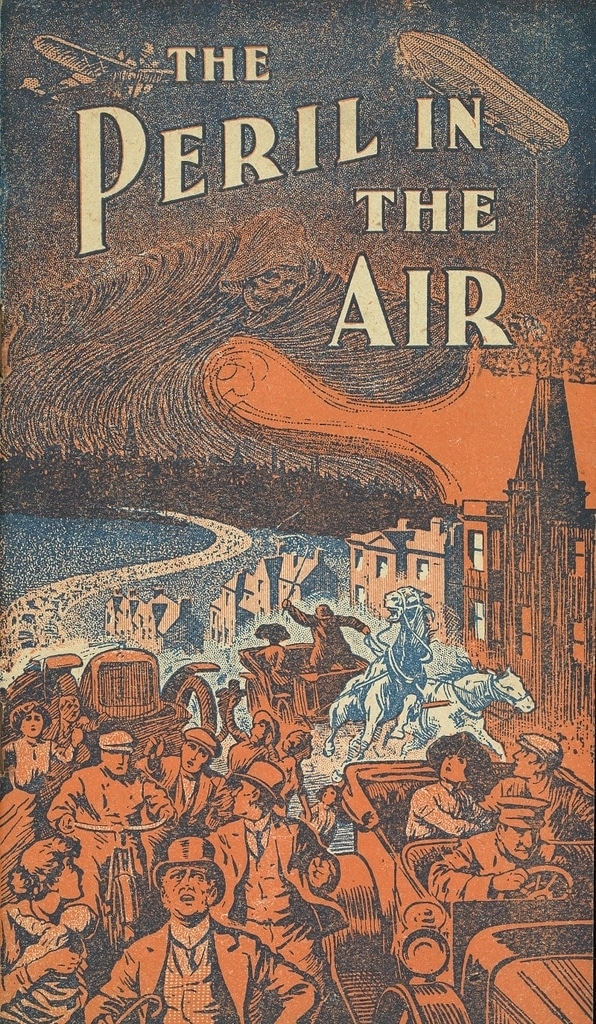
Read closely and in its context, the science in Hay’s novella is not just persuasive, it is also politic. Writing in 1880, Hay was working at a time in which science and the emerging discipline of public health were in a state of flux. Long-held views about the causes and consequences of disease were being eroded by new findings, especially the emerging germ theory of disease. Thus, in attempting to write a fictional work that used science to “make the improbable possible”, a writer like Hay would have to navigate a changing terrain of what counted as possibility.
In his emphasis on filth in both its moral and material forms, Hay was borrowing the vocabulary and social ethic of what have been called the “anti-contagionists”. The anti-contagionists tended to hold the belief that diseases spread by miasma, or “bad air”. The bad air could come from any number of places: from corpses or other rotting organic materials, from the bodies and homes of the poor, from cesspools and stagnant or dirty water, and even, in the view of one important miasmatist, from the groundwater lying beneath a city.
Most miasmatists equated bad air with bad smell. Thus, miasmatist works like Edwin Chadwick’s Report of the Sanitary Conditions of the Working Classes can be read not just for their contribution to the emerging discipline of epidemiology, but also as veritable anthologies of stories about stench. Chadwick correlates “miasmatic exhalations”, “putrid” and “obnoxious effluvia”, “pestiferous vapours and fogs”, “vitiated” and “foul air”, “noisome vapours”, “injurious gas”, and “foul ordure” with outbreaks of diseases like cholera and typhus. For him, the only solution was to institute broad sanitary reforms to remove the causes of these bad airs. At their best, the miasmatists practiced social medicine that included a focus on diet, education, and forms of social uplift. At their worst, they were racist and classist bureaucrats. But whatever their scientific and ideological deficiencies, miasmatists were amazingly successful at marshalling the resources and political will (often with the important tool of disgust at their disposal) to create a compelling vision of the sanitary city. If, as Chadwick put it, “all smell is disease”, then only a city-wide solution could possibly stop it.
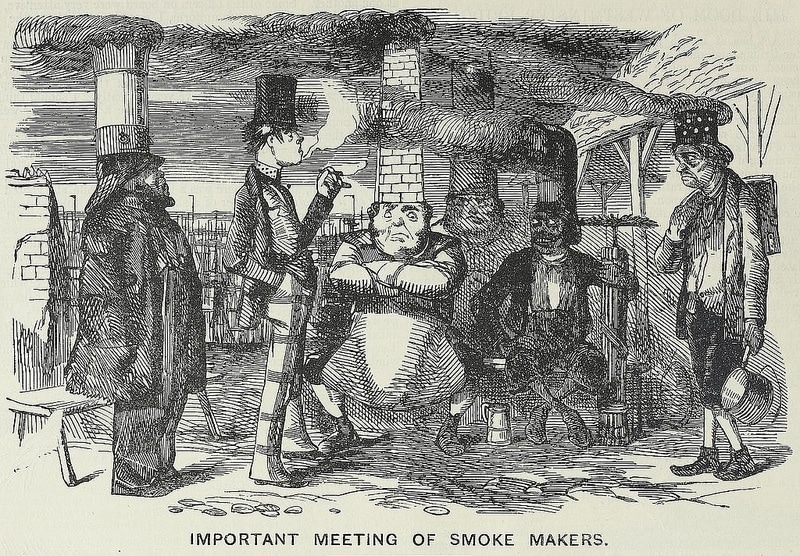
But by the time Hay was penning his tale in 1880, the whole miasmatist position was losing its power to provoke the kind of disgust necessary for political action. Analyzing the “Great Stink” of Paris, which also occurred in 1880, David S. Barnes shows that “scientific progress as represented by the nascent germ theory of disease, may actually have blocked rather than accelerated remedial mobilization”. The germ theory suggested that diseases were not spread by the air at all, whether good or bad, smelly or pure. Thus the stink could not produce what Barnes calls a “sensory crisis”, whereas a similar Great Stink in London in 1858 led to comprehensive sanitary reforms.
Hay’s lurid tale of destruction is technically scientific while also being a bricolage of available science. From the miasma theory, he takes his focus on the air and his social ethic. But he jettisons the mechanism of miasma itself. I quote again from Dr Wilton Forrester, this time reading from a newspaper: “We must suppose that a gush of foul sewer-gas, or some similar poisoning of the thick and heavy air, produced the fatal effect”. This popular belief in miasmas he finds laughable. In fact, Hay gives us an indication that Forrester, as a cutting-edge medical professional, accepts the germ theory. But he has Forrester mention it only in passing on the way to what is a clear espousal of a non-germ cause of death:
No; I see only one way in which the fog is likely to act as a life-destroying agent — apart, that is, from its action in carrying poisonous germs and spreading epidemics, which illustrates its slower action — but as a rapid and immediate extinguisher of vitality the cause must be bronchial spasm.
Germs here represent a “slower action”, a secondary and, in this case, minimal threat. Hay allows this concession to the germ theory while retaining urgency for something like the older filth theory, although it is now presented as mere mechanical suffocation rather than disease.
In order to understand Hay’s work in its totality, then, we have to see it not just as a representation of a particular view of science, but as a changing view of danger and how danger relates to a social system. As the anthropologist Mary Douglas showed in her groundbreaking work Purity and Danger, pollution behavior always has to do with the maintenance of a social system. She writes, “Dirt is the by-product of a systematic ordering and classification of matter, in so far as ordering involves rejecting inappropriate elements. This idea of dirt takes us straight into the field of symbolism and promises a link-up with more obviously symbolic systems of purity”.
Thus, for Douglas, rituals either in modern secular cultures or in primitive ones, reinforce duties, relationships, and morality.
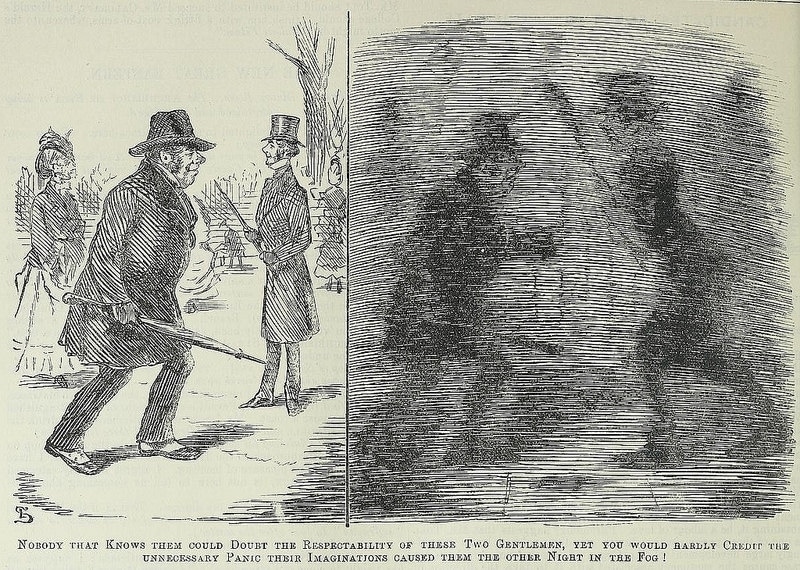
Douglas’ theories help us explain the climax of Hay’s tale, which is a single spectacle that he calls “the most horrible, the most gruesome, the most ghostly and unutterably terrific of all”. He sees all the gradations of London society illuminated by gas lamps in a theater but fixed in a kind of collective rigor mortis. He writes:
I had a full and instant view of the whole interior. The gas still burnt, and threw a light upon the scene more brilliant than perhaps it had been on the previous night; and the people—no, not the people, the DEAD!—there under the glaring light they sat, they lay, they hung over the benches, the galleries, the boxes, in one tremendous picture of catastrophe!
And again, later:
Yes, there they lay, the old, the young, the rich, the poor; of all ranks, and stations, and qualities, all huddled in one cold and hideous death; while open eyes, piteous faces, distorted limbs, and strange, unnatural attitudes told the tremendous tale of that sudden midnight agony.
Douglas writes that, failing their normal supportive functions, filth rituals can also enact a shattering and renewal of social systems. Every duty is taken out of place and disordered to the point of creating a productive “formlessness”. Only in this “final stage of total disintegration” can formlessness become a symbol not just of decay but of “beginning and of growth”. Or as Mircea Eliade put it in discussing tales of water cataclysms:
In water everything is “dissolved,” every “form” is broken up, everything that has happened ceases to exist; nothing that was before remains after immersion in water, not an outline, not a “sign,” not an event. Immersion is the equivalent, at the human level, of death at the cosmic level, of the cataclysm (the Flood) which periodically dissolves the world into primeval ocean. Breaking up all forms, doing away with the past, water possesses this power of purifying, of regenerating, of giving new birth … Water purifies and regenerates because it nullifies the past, and restores — even if only for a moment — the integrity of the dawn of things.
So, in the end, if Hay’s novella speaks to us today, it is not because Hay writes a rigorous science fiction tale using a form of science we recognize as our own. It is rather because his confusion — or what we see as confusion — helps us understand our own predicament better. Even in our most rigorously scientific environmental efforts, we still feel the need for moral parables. One thinks of the decidedly unscientific analogy of the boiled frog amidst the otherwise rigorous claims in An Inconvenient Truth. And certainly there are strains of dystopian imaginings and apocalyptic visions in some environmentalist writings — why shouldn’t there be? As Hay knew, in order to combat the ills of society we need to appeal to both science and morality — and if that doesn’t work, a little horror can’t hurt.
Brett Beasley is a doctoral student at Loyola University Chicago. His research focuses on attitudes toward death in late nineteenth-century literature and culture.
Public Domain Works
Further Reading
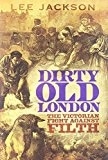
Dirty Old London: The Victorian Fight Against Filth (Yale University Press, 2014) Lee Jackson
A tour through the underbelly of Victorian filth, and an introduction to the men and women who attempted to stem the rising tide of pollution which acompanied the rapid growth of the capital.
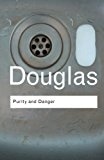
Purity and Danger: An Analysis of Concepts of Pollution and Taboo (Routledge, 2002) Mary Douglas
Tracing the words and meaning of dirt in different contexts, and how what is regarded as dirt in a given society is any matter considered out of place. Listed by the TLS as one of the 100 most influential non-fiction books published since 1945.
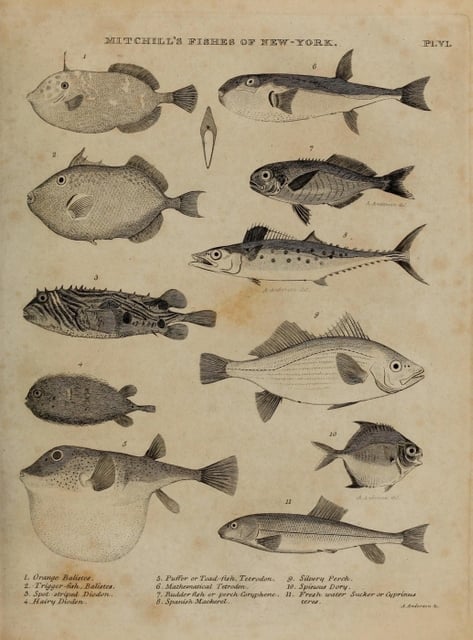 Dr Mitchill and the Mathematical Tetrodon
Dr Mitchill and the Mathematical Tetrodon
 Richard Spruce and the Trials of Victorian Bryology
Richard Spruce and the Trials of Victorian Bryology